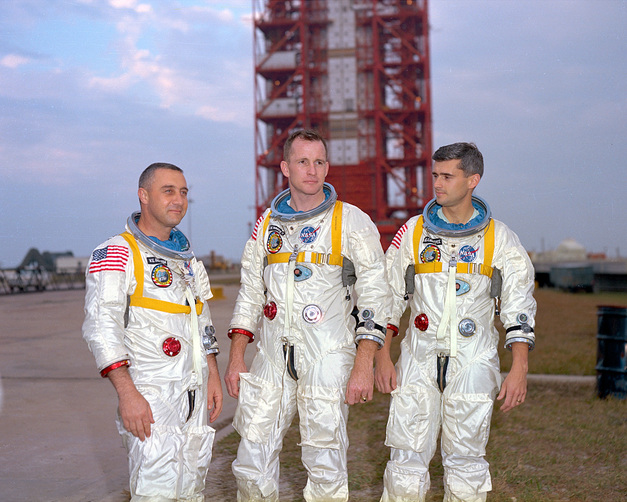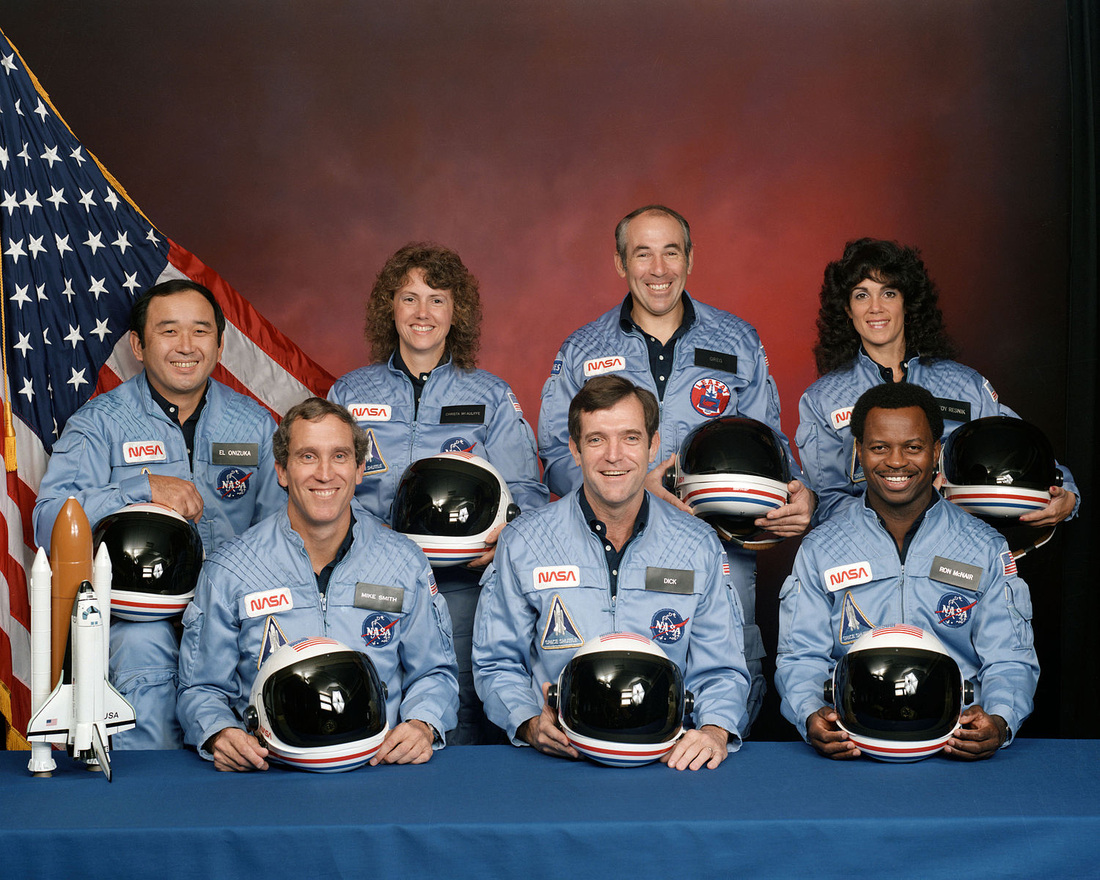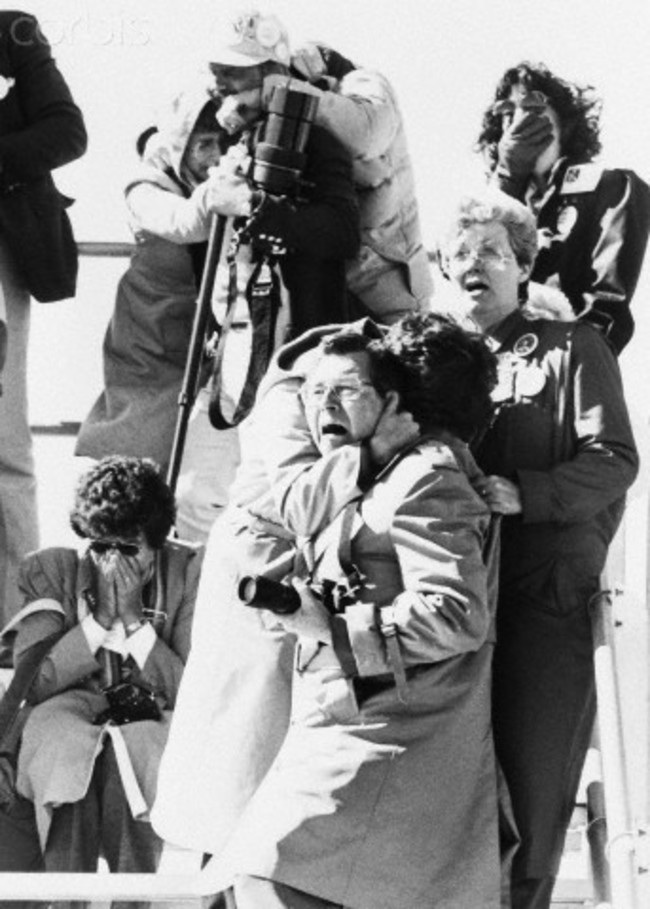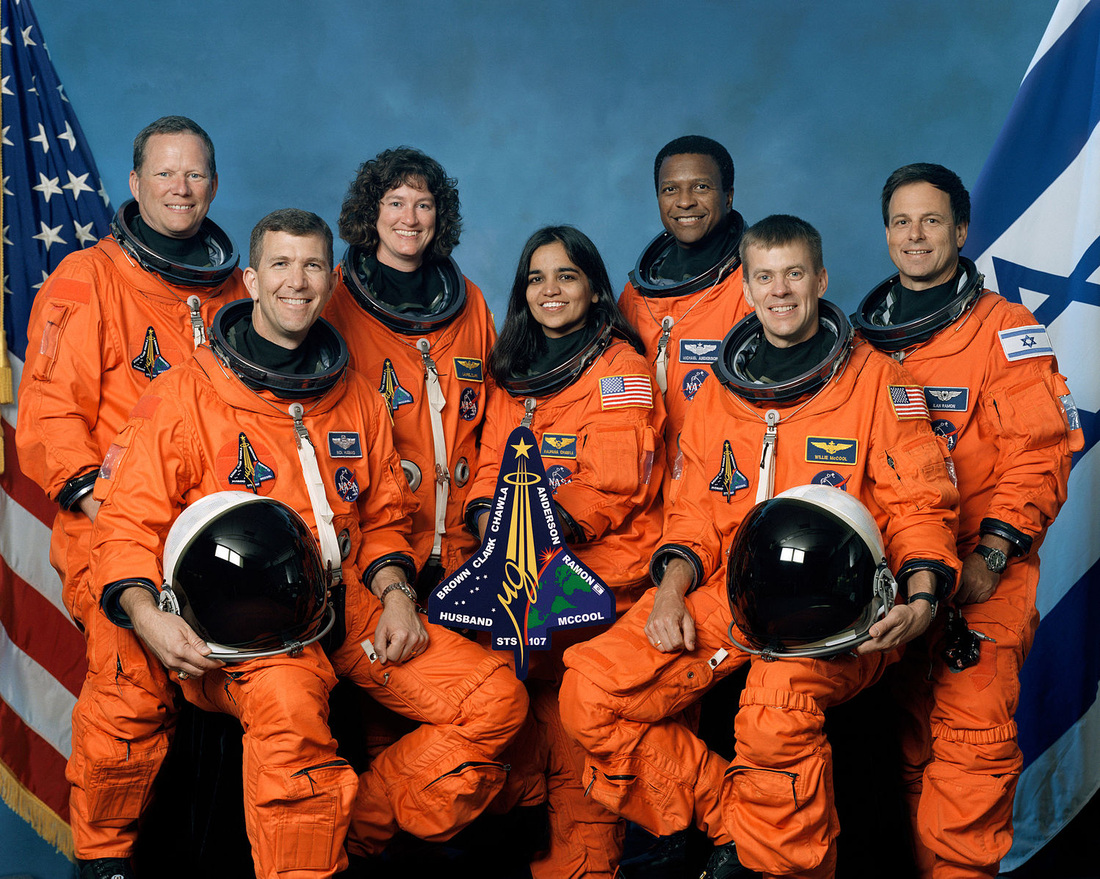 The title of this post is a Latin phrase meaning something like "Through adversity, to the stars". It's a great motivational phrase, and particularly applicable to today's photos: the American astronauts who have given their lives to reach the stars. Last week I took my son (OK, I took both of them, but only the older one appreciated it) to the Udar-Hazy Air & Space Museum Annex. We've been discussing early aviation, but what really touched me was the realization that in one place, we saw everything from the earliest flying machines to an actual space shuttle... and less than 100 years separated their construction. In one hundred years, we've gone from not being able to fly at all to standing on the moon. That's.... that's remarkable. Imagine what our ancestors would have said. Extraterrestrial exploration is such a new field (see: that bit about 100 years), and could have easily been derailed at any moment, any election, any scare. But as a species, we've pushed through our adversity, and are reaching the stars. The men and women who have made that possible deserve our admiration and gratitude, because in another hundred years, we may well be on another planet. Thanks to them. But for every success, there have been failures, and some have been catastrophic. This week we commemorate three. On January 27, 1967 a fire during a training launch killed the three astronauts of the Apollo 1 mission. It was to have been the first of the manned missions of the moon. The program was suspended briefly, with the next manned mission launching almost two years later. (From Wikipedia) Command Pilot Virgil I. "Gus" Grissom, Senior Pilot Edward H. White II, and Pilot Roger B. Chaffee On January 28, 1986 the space shuttle Challenger disintegrated a little over a minute into its tenth mission, killing all seven crew members. Of the disasters we commemorate this week, this is the one that I feel personally had the potential to derail American space flight, and am thrilled that it didn't. These seven brave men and women wouldn't have wanted it to. (from Wikipedia) (front row) Michael J. Smith, Dick Scobee, Ronald McNair (the second African-American in space); (back row) Ellison Onizuka, Christa McAuliffe (a school teacher who was chosen from thousands of applicants to be the first teacher in space), Gregory Jarvis, and Judith Resnik (NASA's second female astronaut). All of us who were alive that day remember this feeling: Onlookers reacting to Challenger explosion (Corbis Images) On February 1, 2003, the space shuttle Columbia tore apart during reentry, killing all seven astronauts on board. The shuttle had flown twenty-nine missions, including its final journey of sixteen days. The disaster caused NASA to call a halt to all manned space missions for two years, while conducting safety examinations. But still, despite this horror, we kept reaching for the stars. (from Wikipedia)
Mission Specialist David M. Brown, Commander Rick D. Husband, Mission Specialist Laurel Blair Salton Clark, Mission Specialist Kalpana Chawla, Payload Commander Michael P. Anderson, Pilot William C. McCool, Payload Specialist Ilan Ramon. President Bush's response to the disaster still sends chills down my spine: "This day has brought terrible news and great sadness to our country ... The Columbia is lost; there are no survivors... The cause in which they died will continue....Our journey into space will go on." Our journey still continues, but now it's become international. We are all striving to reach the stars, but are mindful of the adversity we've gone through to get there. These brave astronauts, who knew what they risked even if they never foresaw their deaths, who became symbols for us and for the world, deserve to be remembered. Per apera ad astra. To the stars, through adversity.
1 Comment
|
Historical Romance is
|
|
Privacy Policy - Website contains affiliate links
Caroline@CarolineLeeRomance.com
|

#HotHilariousHistorical (tm) #HistoryWithHeart (tm) |



 RSS Feed
RSS Feed




